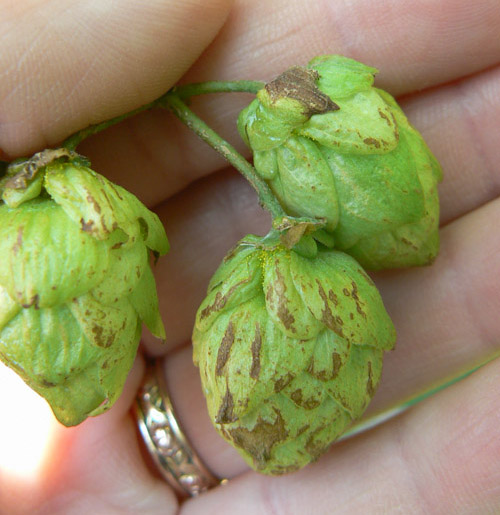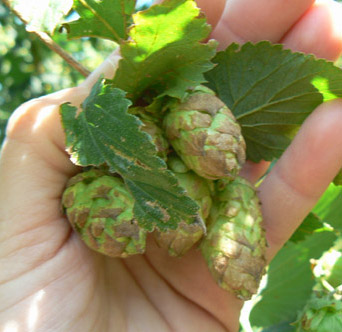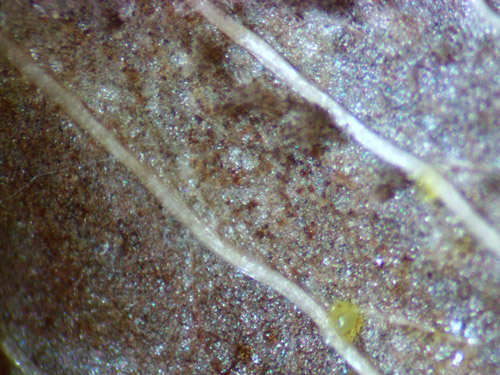Alternaria cone disorder in hops
Learn how to identify and manage alternaria cone disorder in hops.
Alternaria cone disorder is a disease of hops caused by the fungus Alternaria alternata. A. alternate is widespread in the environment and can affect a wide range of crops in many growing regions. In the major hops production regions in the northwestern United States, the disease is generally thought to be of minor importance. In Ontario, it is seen to some degree in hops every year, although its full impact on crop quality is not yet understood. Alternaria cone disorder is thought to predominantly affect late maturing cultivars, however this year the disease has appeared even in early harvested cultivars.
Symptoms first appear as a reddish-brown discoloration on the tips of the bracteoles on young or mature cones (Figure 1). Bracts may remain unaffected, leading to a green and brown striped appearance of the cones. When the disease infects cones through wind or other mechanical damage, symptoms may appear on both bracteoles and bracts. Symptoms can spread rapidly, turning cones dark brown in a fashion similar to downy or powdery mildew (Figure 2). In severe cases, the entire cone may turn dark brown. If the underside of infected tissue is examined with a high magnification hand lens, it may be possible to see fungal growth and spores, which are dark in appearance (Figure 3).



There are several strains of this fungus. Many of which are weak pathogens that typically affect plant tissue compromised by other factors. In hops, Alternaria is thought to predominantly invade cones through tissue damaged by mechanical injury (predominantly wind damage) or wounds caused by insect feeding or other diseases. Disease development is greatest when mechanical injury to cones occurs in conjunction with extended periods of leaf wetness/dew or high humidity. Infection by this pathogen is favoured when temperatures during rain or other moisture events are greater than 18°C. The Alternaria pathogen overwinters on plant debris or as weak pathogens on other plants.
Management
- Avoid mechanical injury of cones during field activities and application of chemicals.
- Minimize wind damage to cones whenever possible.
- Employ good cultural practices to minimize canopy wetness in hop yards such as stripping the bines on the bottom level of the hops plants to promote air circulation and timing irrigation schedules to reduce long periods of wetness on the cones.
- There are no fungicides currently registered for the control of Alternaria cone blight on hops in Canada. The impact of products registered for other diseases on this pathogen is not known.